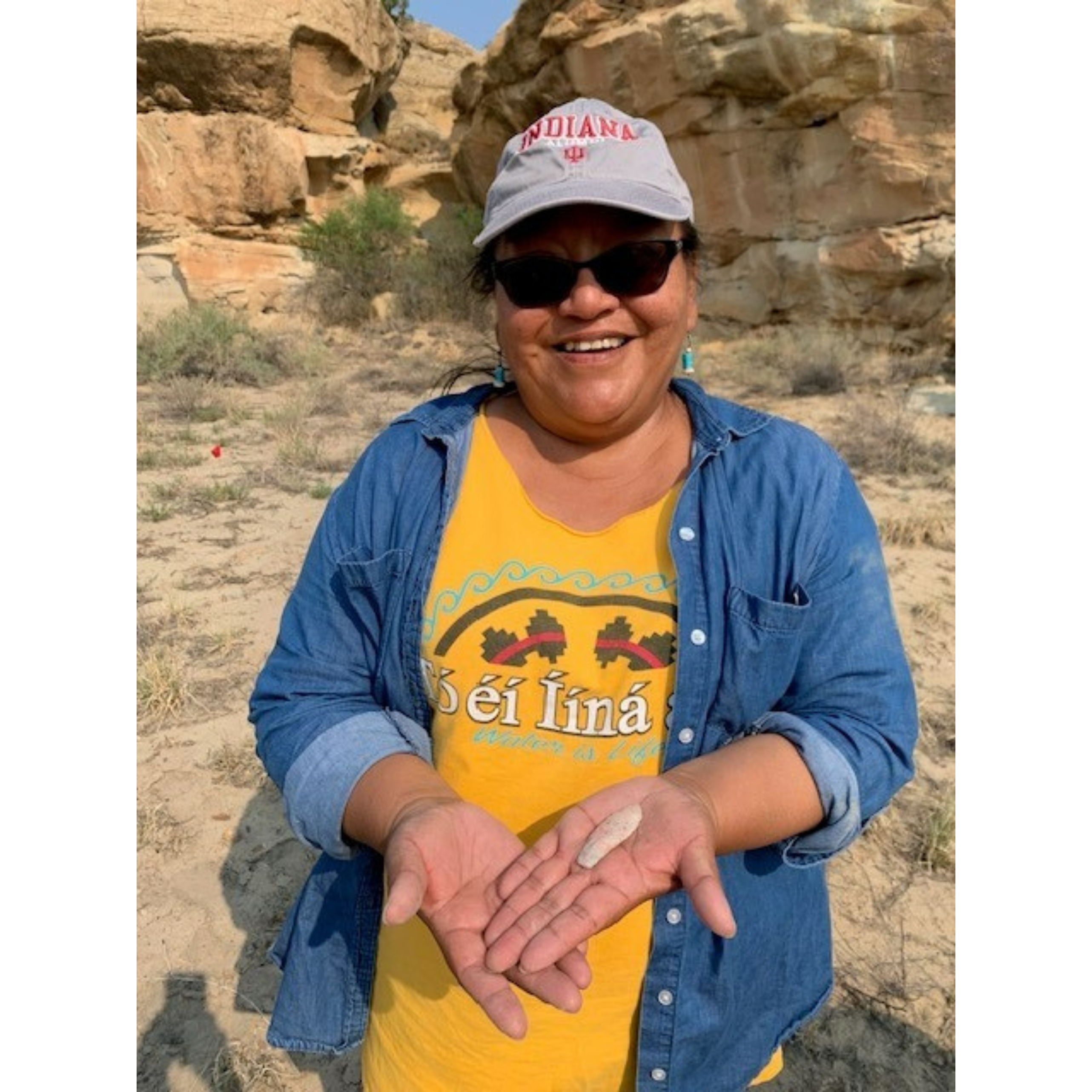Archaeologist focused on community-based Indigenous research joins ASU faculty

Presidential Postdoctoral Fellowship Scholar Davina Two Bears is joining the faculty at ASU's School of Human Evolution and Social Change.
With a career focused on Indigenous archaeology, Davina Two Bears is excited to be back in Arizona and researching at Arizona State University.
Two Bears is joining the faculty at the School of Human Evolution and Social Change this fall as a Presidential Postdoctoral Fellowship Scholar. Her research focuses on the Old Leupp Boarding School on the southwest Navajo reservation.
“I will be further researching and writing a book about the Old Leupp Boarding School's history,” she said. “I will also research the Old Leupp Boarding School's reuse as a Japanese isolation center during World War II.”
Two Bears is Navajo from Birdsprings, Arizona, and is happy to be back in the state. She earned her PhD in anthropology with an emphasis in archaeology from Indiana University-Bloomington and obtained a minor in Native American and Indigenous studies.
“I enjoy my career because I enjoy educating people about Native Americans, both in the past and present," Two Bears said.
ASU News spoke with Two Bears about her work and plans at Arizona State University
Editor's note: Answers have been edited for length and clarity.
Question: Can you tell us about your current research?
Answer: I am researching the history of the Old Leupp Boarding School on the southwest Navajo reservation. It was a federal Indian boarding school that was open from 1909 to 1942. In 1943 it was reused as a Japanese isolation center (the Leupp Isolation Center) during World War II, where the U.S. government imprisoned Japanese Americans who were "troublemakers" from all the other Japanese incarceration camps. This school has a unique history of oppression and injustices committed against Navajo children and Japanese Americans by the U.S. government. My research of this historical archeological site is decolonizing and community-based, and I incorporate nondestructive research methods to tell the story of Old Leupp.
For my postdoc, I will be further researching and writing a book about the Old Leupp Boarding School's history. I aim to conduct oral-history interviews with Navajo people from the Leupp and Birdsprings community to investigate the history of the Leupp Isolation Center and Japanese American imprisonment on Navajo lands.
I will also partner with my colleagues, Dr. Jun Sunseri and Dr. Koji Lau-Ozawa, historical archaeologists experienced in community-based archaeology and the use of non-destructive archaeological field methods, to map the Old Leupp Boarding School historical site. We plan to invite the local community and students as well to assist in this project, and we aim to develop educational products and materials.
Davina Two Bears holds an Archaic projectile point that is approximately 8,000 years old during work on a survey of Navajo sites in Chaco Canyon Cultural Historical Park. Photo courtesy of Davina Two Bears
Q: Why do you enjoy your career, and what you are looking forward to at ASU?
A: I enjoy being out in the field conducting archaeological survey work at Native American/Navajo sites, as well as interviewing Navajo elders — learning about the past from tribal cultural knowledge-keepers.
I look forward to being back home in Arizona where I am from and being closer to my research sites on the Navajo reservation. I also look forward to mentoring students here at ASU, especially Native American and Indigenous students interested in the field of archaeology.
Q: Anything else you would like others to know about you?
A: I am Navajo, originally from Birdsprings, Arizona, on the Navajo reservation. My clans are Bitter Water, and I am born from Red Running into the Water clan. My maternal grandfather's clan is Edge Water, and my paternal grandfather's clan is also Bitter Water. I previously worked for the Navajo Nation for 14 years as a tribal archaeologist and program manager at the Navajo Nation Archaeology Department – NAU Branch Office. I enjoy spending time with my three young adult children and my extended family.
More Arts, humanities and education

ASU professor's project helps students learn complex topics
One of Arizona State University’s top professors is using her signature research project to improve how college students learn…

Award-winning playwright shares her scriptwriting process with ASU students
Actions speak louder than words. That’s why award-winning playwright Y York is workshopping her latest play, "Becoming…

Exceeding great expectations in downtown Mesa
Anyone visiting downtown Mesa over the past couple of years has a lot to rave about: The bevy of restaurants, unique local shops…


